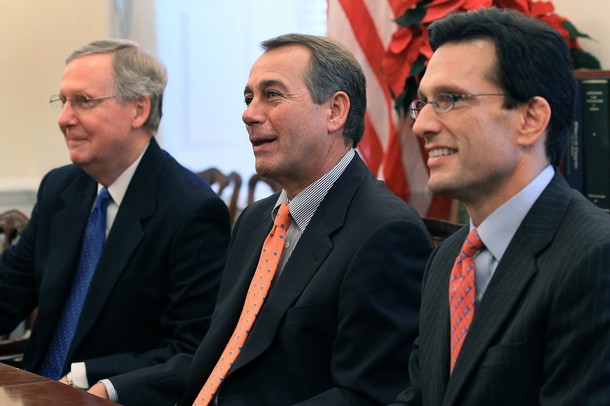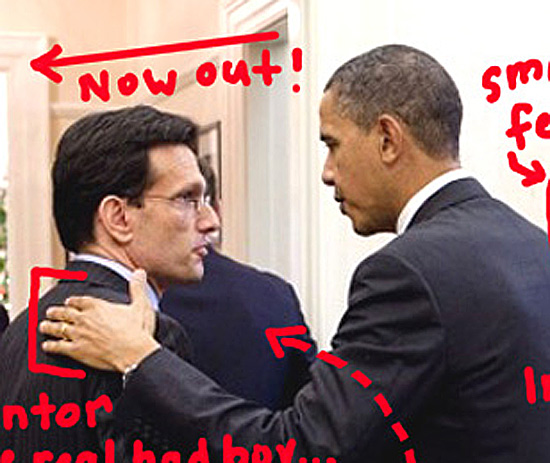Notes
Treaties, Credit Taking and our So-Called Democratic Culture

Robert Knudsen, White House/John F. Kennedy Library
The above photograph is nearly fifty years old and I doubt very many people have ever seen it before—or can identify the event that it marks. I couldn’t (until I discovered it in a recent slide show at The Big Picture.) Nevertheless, it is interesting for several reasons.
For one, it is a reminder of how homogenous the press corp was as recently as the mid-1960s. Situated in the White House Treaty Room, it is possible Helen Thomas can be found somewhere in the vicinity, but she certainly isn’t in this photograph which is not only lily white, but masculine to the core. For another thing, notice the flood lights that are illuminating the table and the document, a reminder that photo-ops have long been part of the political process. Perhaps most interesting, however, is that apart from the journalists, there are no obvious political agents here. If we can assume this event marks the signing of a treaty, there is no direct evidence of who might have engineered or negotiated it or who might take credit for it. The painting of presidents looking down upon the scene would seem to suggest that whatever victory is to be claimed here inheres not in an individual, but in the presidency as a democratic institution. It is hard to imagine such a photograph being taken today.
If you haven’t figured it out by now, the photographers are huddled around the Nuclear Test Ban Treaty, signed by President Kennedy on October 7, 1963. It was an incredibly important historical event given that concerns about above ground nuclear testing had been on the international public agenda since the middle of the Eisenhower administration in 1955. But no less important are contemporary efforts to manage nuclear arms through START, a treaty that as recently as September 16th was endorsed by four Republican members of the Senate Foreign Relations Committee, as well as a number of Republican national security stalwarts, including Henry Kissinger, James Baker, and George Schultz. Even Pat Buchanan notes that the Presidents he worked for—Nixon and Reagan—would have supported it. As of this morning, however, it appears that only one Republican Senator—Richard Lugar of Indiana—supports the treaty, while congressional Republican leadership in general seems determined to deny any and all initiatives by the administration, notwithstanding any value they might have for national security or the movement towards a nuclear free world.
What does seem clear is that once a treaty is signed—as it seems inevitable that some treaty will be signed whether in the lame duck session of Congress or once Republicans take control of the House in the new year, we are unlikely to see a photograph in which the Treaty itself is seen as more important than those who brought it into being. And for future generations looking back on the politics of this time, that too will offer interesting evidence of the state of our so-called democratic culture.


Reactions
Comments Powered by Disqus